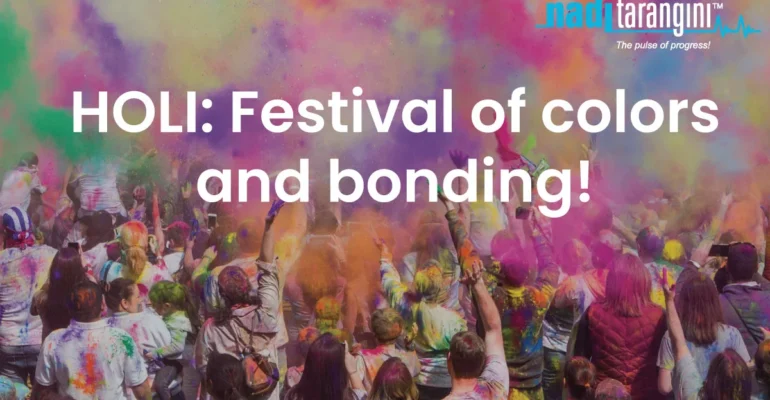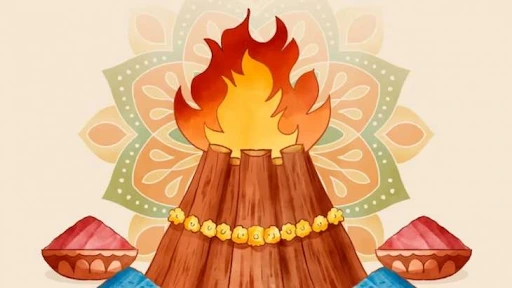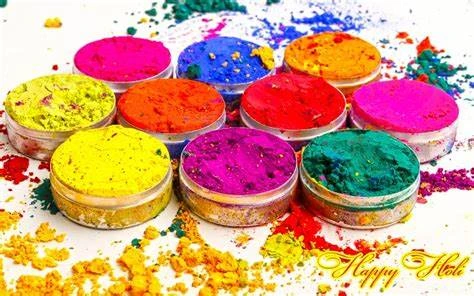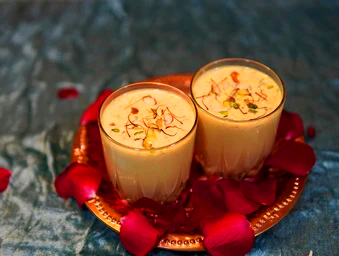HOLI: Festival of colors and bonding!

HOLI: Festival of colors and bonding!
Millions of Indians and South Asian countries mark the arrival of spring with the festival of colors, joy, and renaissance named Holi. Holi is a way of announcing the end of colder days and the beginning of warmer days. It is celebrated on the last full moon of the year.
Holi is a part of the regimen for the season of Vasant (spring), the arrival of warmer days. These days, the temperature rises, along with the increasing humidity, melts the Kapha Dosha (phlegm) in the body and can lead to many Kapha-related diseases. The rituals of the festival aim to restore the three doshas to their balanced state.
The highlights of Holi are Day 1: Holika Dahan (celebrated at night), Day 2: Dhuli Vandan (enjoying with colors). In many places of Maharashtra, the 5th day from the day of Holi i.e., Rang Panchami is celebrated with colors.
Holika Dahan signifies winning over demons, rising to a new dawn by scarifying your sins and deeds in the “Pyre of wood-Holika” as per ancient Hindu Mythology.

Like all festivals in India, Holi too has its own traditional recipes, which are prepared on this occasion as part of the celebration. Indeed, the delicacies prepared on this special occasion add to the delight and excitement.
The most famous in the lot are Puran Poli (traditional Maharashtrian sweet stuffed paratha), Katachi amti (dal-based Maharashtrian stew), Ghujiya (North Indian sweet and savory fried wheat para), Malpua (sweet-dal based delicacy), Khasta kachori (dal based savory item), etc. The food delicacies are helpful in dehydration-related problems caused by sudden temperature rise.
Dhulivandan is mostly associated with the celebration of colors. Traditionally, Holi was celebrated with dry colors known as ‘Gulal’, which were prepared naturally from flowers and other products that had dyeing properties. Color powders were traditionally prepared from Ayurvedic herbs like Neem (Azadirachta indica) and Henna (Lawsonia inermis) for green, Kumkum and Raktachandan (Pterocarpus santalinus) for red,
Haldi (Curcuma longa) for yellow, Jacaranda flowers for blue and herbs like Bilva (Aegle marmelos), Amaltas (Cassia fistula), Marigold (Tagetus erecta), etc. Applying these color powders reduces Kapha dosha and Kapha-related skin problems due to seasonal changes.

The biggest highlight of the Dhulivandan menu is the lip-smacking Thandai (milkshake or smoothie with traditional herbs and dry fruits) and Jal-jeera (a cooling drink from cumin seeds). These drinks provide proper hydration and nourishment to the body. They are helpful to the body for acclimatizing to seasonal changes.
Indian festivals have very scientific and logical rituals and traditions associated with the maintenance of health. Understanding and adopting these rituals in day-to-day life is very important for maintaining good core health.

Here are some tips for celebrating healthy Holi –
- Use natural, non-synthetic colors for Holi. Take care of your skin while playing Holi.
- Limit your playtime too. That way you can prevent the risk of health problems like cough, cold, headache, etc.
- Ensure that your body cools down to room temperature before taking a bath.
- After a shower, moisturize your body well and put on comfortable clothes.
- Make sure to eat healthy food. Don’t consume extra spicy food along with cold drinks and ice creams.
Celebrate this festival of colors with your loved ones and stay tuned for some delicious healthy Holi recipes.
New post coming up TOMORROW!!

